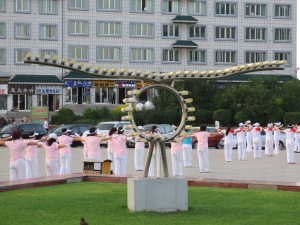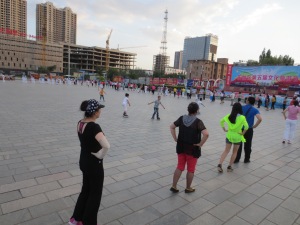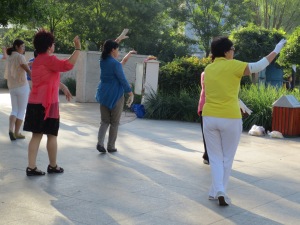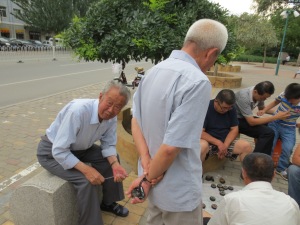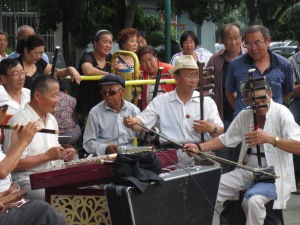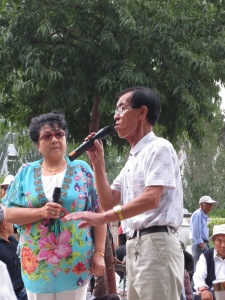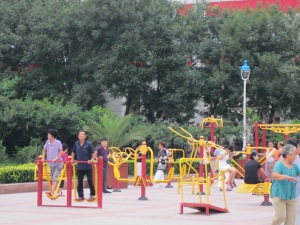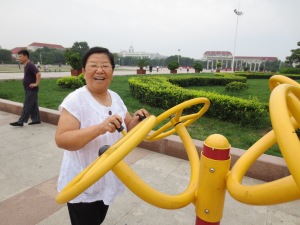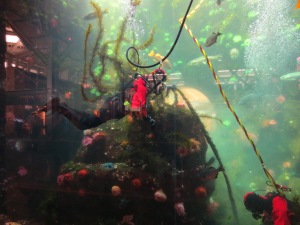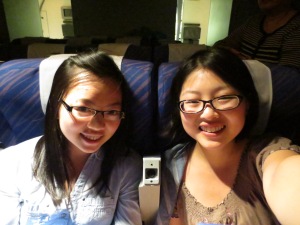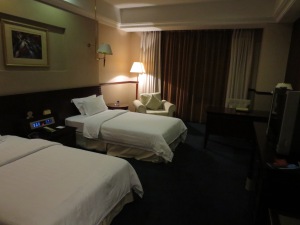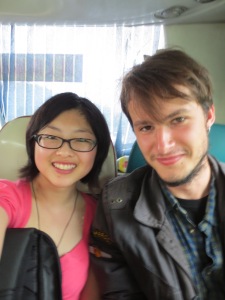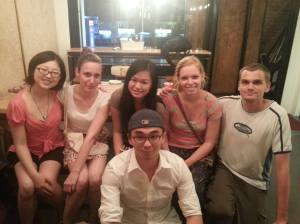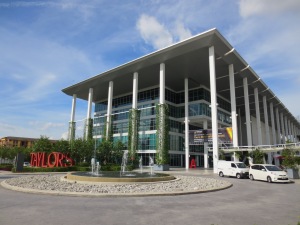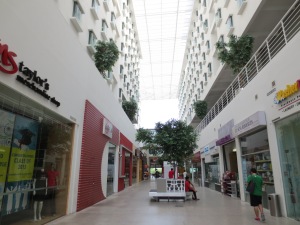What if I told you that was part of a class shirt along with “F***★THAT★ALL”, “f***ing & funny”, and “just do it”?
Welcome to Dong Sheng Second High School.
The story began when I expressed interest in experiencing a day in the life of a Chinese high school student. Luckily, one of my cousins is in her last year of high school, and her teacher agreed for me to sit in on her classes.
A bit of background about education in China: students usually go through 6 years of elementary school, in their last year, theres an exam that determines which middle school they will attend. After 3 years of middle school, there’s an exam that determines which high school they will attend. After 3 years of high school, there’s yet another exam that determines which university they will attend. This last exam (or rather series of exams) is known as gao kao (高考). Getting a high score in this exam is necessary to get into a good university, getting into a good university is usually the first step to getting a good job, and getting a good job is what everyone wants. I could go on about the politics, the cultural attitudes, the perceived strengths and weaknesses of the Chinese education system, but there are other people who are far more informed than myself writing about those topics (an example comparing Eastern vs. Western attitudes here). So instead, I’ll focus on what I experienced.
School starts for senior high school students 6 weeks earlier than other high school students. This is to help them better prepare for gao kao. So even though it was only Aug 5, my cousin had been attending classes for almost a month already.
My day went a little something like this:
5:33 am – 6:00 am- Wake up, get ready, walk to school
6:00 am- 6:20 am- arrive in class, group run (800m)
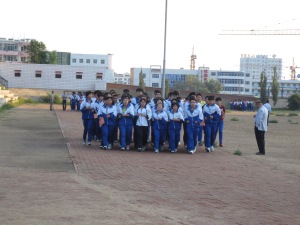
This was really interesting, it was quite an experience to be running while packed in an an invisible sardine can. I think I had to do this once upon a time in elementary school too. Periodically, the student head of the class would start a chant and the class would yell while running. It’s a good thing it’s not too hot in Dong Sheng!
6:30 am – 6:40 am- reading English out loud
A student stands at the front of class, reads a sentence of a passage, and the rest of the class follows along.
6:40 am – 7:20 am- morning self study (Math)
This consisted of students finishing off any unfinished homework, or working on problems quietly.
7:20 am – 7:50 am- breakfast break
During the breakfast break, my cousin gave me a tour of the place. We walked past the student dormitories where out of town students stayed. There’s one building each for boys and girls, and rooms are shared between 6, 4, or 2 students.
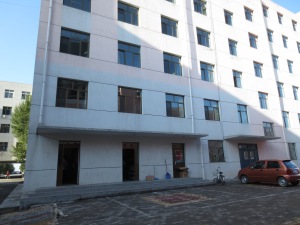
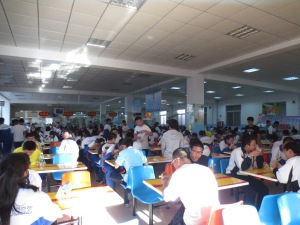
No time for breakfast before running off to class at 5 am? No worries! The school cafeteria offers congee, fried rice, noodles, and other delicious breakfast options.
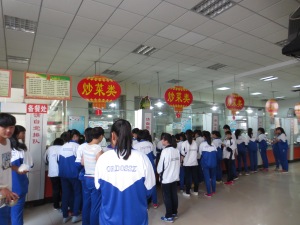
Forgot your notebook at home, ran out of shampoo in your dorm, or wanting some chocolate? Head to the convenience store!
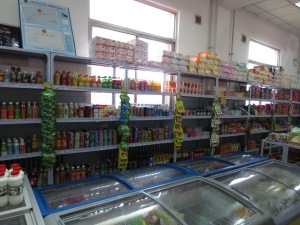
7:50 am – 8:35 am- class (Math)
Needing to catch up on sleep? Class is the perfect time! Just kidding… (sort of). Math class is not the best time to sleep, mostly because the teacher is (apparently) scary. He’s also the head teacher for the class, so don’t get on his bad side!
He mostly reviewed answers from problems assigned previously. I didn’t understand much of what he was talking about. This was mostly because I didn’t learn their grade 12 math in 1st year university math, partially because I’m not good at math, and at least a little because I don’t understand Chinese math terms.
8:35 am – 8:45 am- break
I went to the washroom, walked around the school. Not sure if I was feeling more awake or more tired.
8:45 am – 9:30 am- class (Math)
They seemed to be doing proofs. One of the smarter students in the class corrects a mistake the teacher made after he continued on for a few more steps and wondered what went wrong. The teacher told the class to tell him earlier when they notice a mistake.
9:30 am – 10:00 am- flag raising ceremony (Mondays only)
Normally, the national anthem plays and students assemble outside for announcements. But since only grade 12 students were in class, this was another break time. The boys went outside to play basketball, and I took a nap.
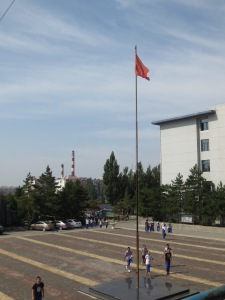
10:00 am – 10:45 am- class (Chinese)
The teacher was very young and probably no more than 5 feet and 100 lbs. She was reviewing grammar exercises with the students. Unfortunately for her, the students were really disruptive. After 20 minutes of trying to correct the homework, she told a historical Chinese story to get the class’s attention. It was truly a struggle for her to maintain the attention of the students. She ended up confiscating a few copies of students’ English homeworks and a cellphone.
10:45 am- 2:00 pm (approx.)- lunch and nap break
Napping is customary in China. Workplaces and schools usually have a 2 hour lunch break so everyone can take a nap after lunch. My cousin and I went back home for lunch, where my aunt had prepared rice and stir-fries for us to eat.
I did not attend school in the afternoon, my cousin caught me nodding off in the morning and suggested that I stay home instead. I kind of regret not attending, I was looking forward to sitting in on their English class.
For the rest of the day, students attend class until approximately 5 pm, they have another break for dinner, then there’s evening self-study in school until 11 pm.
Overall it was definitely an interesting experience. Compared with my high school in Canada, there is much more structured studying time built into the day. This is perhaps part of the reason why parents in China feel like their children have no “real life” experience coming out of high school. There was barely any time left over after studying, sleeping, and eating. While the total time for classes were approximately the same, the content for math was significantly more advanced. I wonder if the great emphasis placed on mathematics in China is why some immigrant parents have high expectations for their children in math in particular.
Personally, I am more than grateful that I got to experience all the things outside of class during my high school, and that’s something no amount of extra book knowledge can change.


